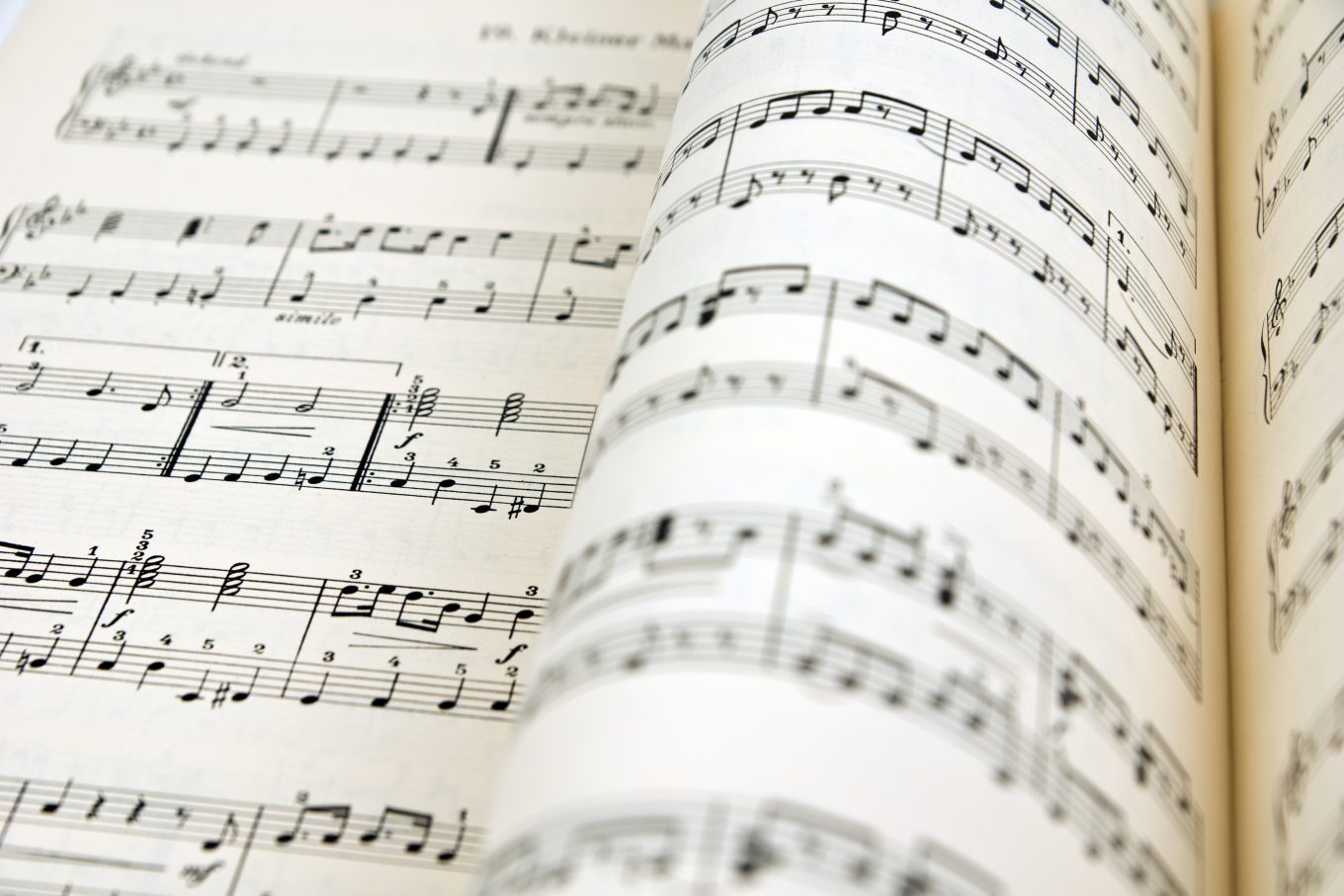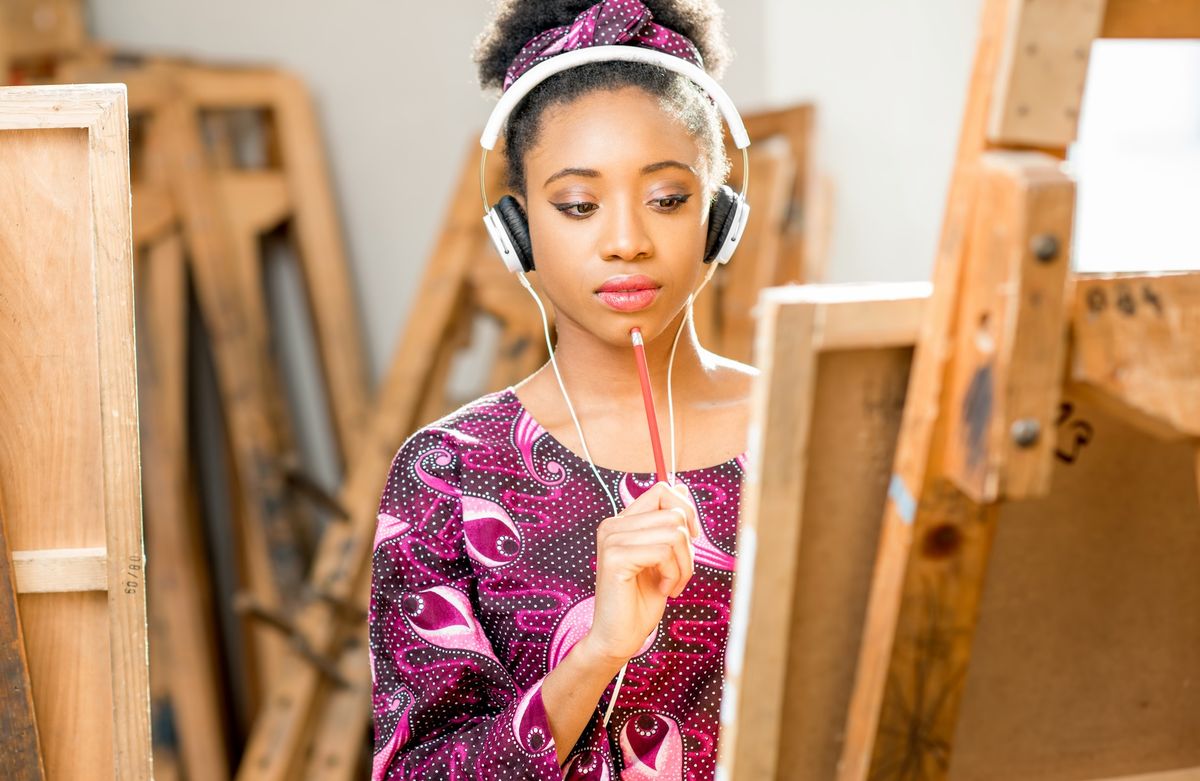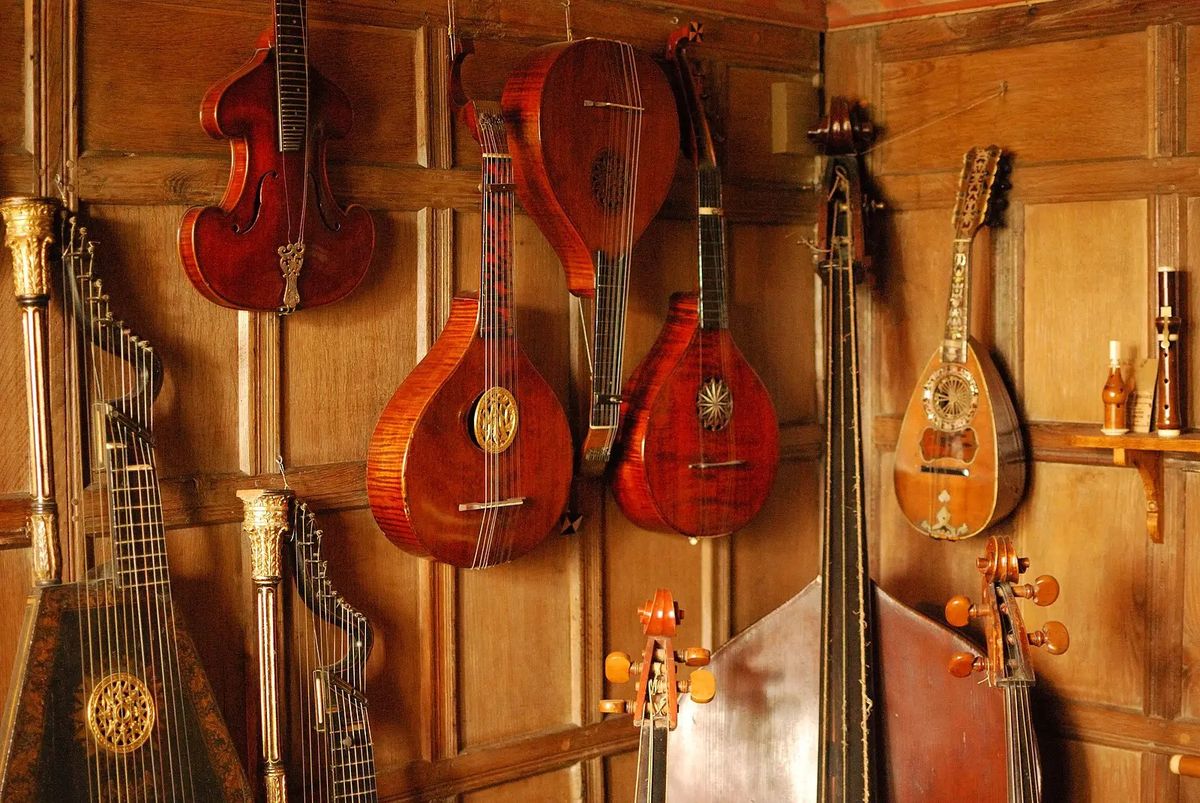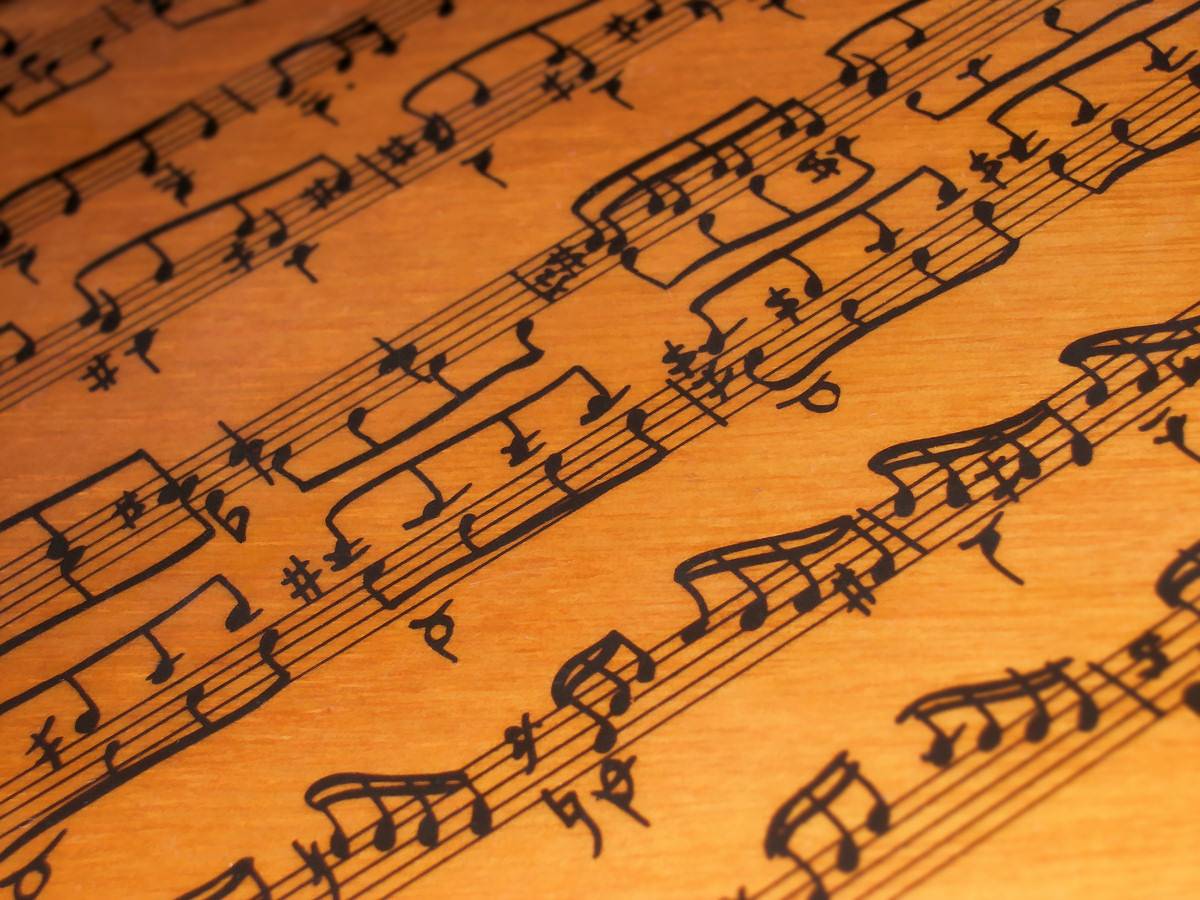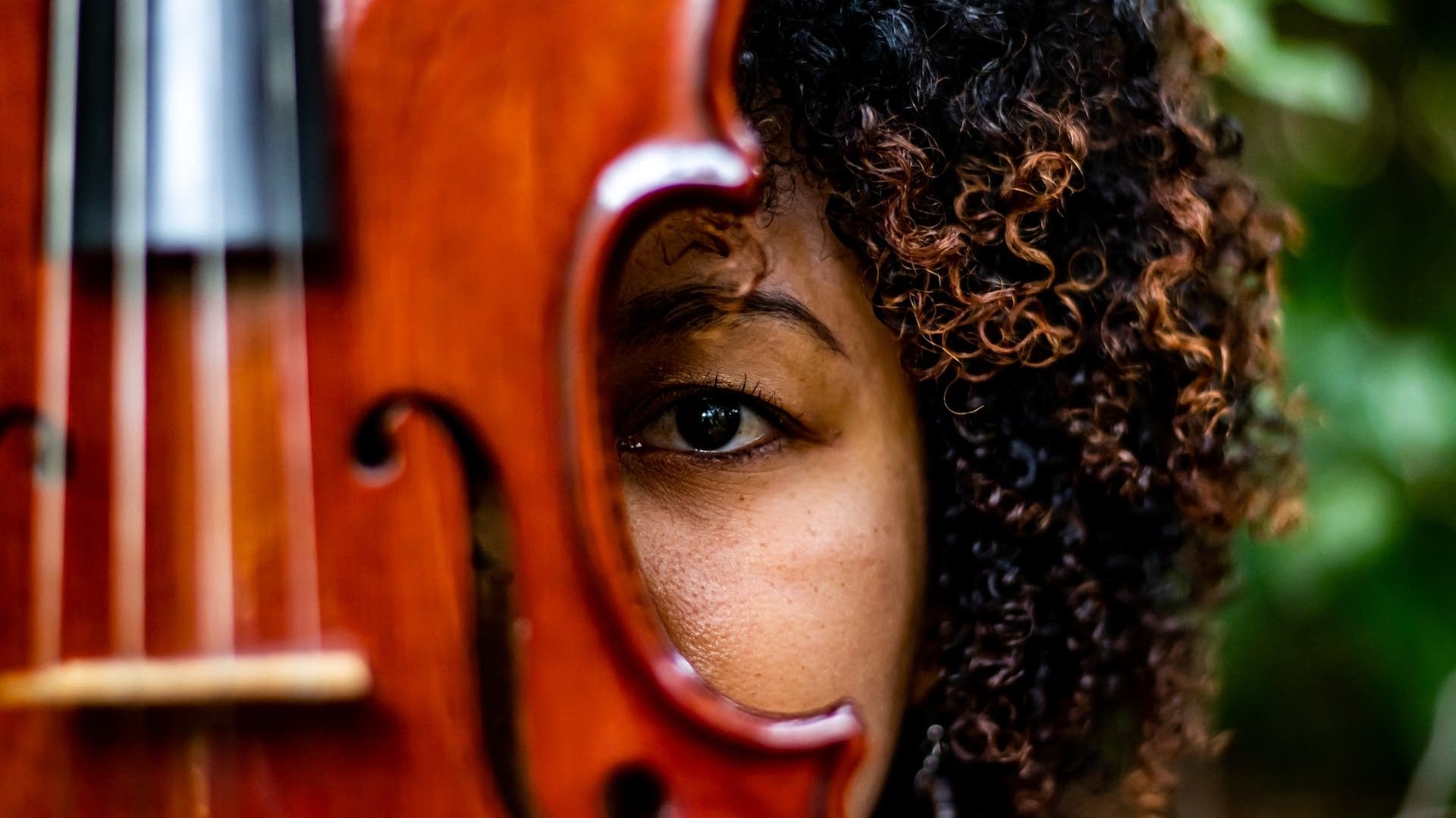

Classical
Why Is Classical Music Not Popular
Modified: January 22, 2024
Discover why classical music is not as popular as other genres and explore the rich history and timeless beauty of classical compositions.
(Many of the links in this article redirect to a specific reviewed product. Your purchase of these products through affiliate links helps to generate commission for AudioLover.com, at no extra cost. Learn more)
Table of Contents
- Introduction
- Historical Context of Classical Music
- Perception and Accessibility Issues
- Complexity and Familiarity
- Lack of Exposure and Education
- Cultural Trends and Preferences
- Technological Advancements and Digital Age
- Marketing and Commercialization Challenges
- The Role of Media and Entertainment Industry
- Conclusion
Introduction
Classical music is often regarded as a pinnacle of human artistic achievement. With its rich history, complex compositions, and emotional depth, it has stood the test of time and continues to captivate listeners around the world. However, despite its undeniable beauty and cultural significance, classical music has struggled to maintain its popularity in modern times.
In this article, we will explore the reasons behind the waning popularity of classical music and examine the various factors that have contributed to its decline. From historical context to accessibility issues, lack of exposure to cultural trends, and technological advancements, each aspect plays a role in shaping the current perception of classical music in popular culture.
While classical music may not have the same mainstream appeal as other genres, it continues to hold a special place in the hearts of those who appreciate its complexity and timeless beauty. By understanding the challenges it faces in the modern era, we can gain a deeper appreciation for this genre and work towards revitalizing its presence in today’s society.
Historical Context of Classical Music
Classical music emerged in the 18th century and is rooted in a long and distinguished history. Composers such as Bach, Mozart, Beethoven, and Chopin were among the pioneers who created timeless masterpieces that continue to be celebrated today. The classical period marked a shift in musical composition and style, characterized by symphonies, concertos, and sonatas.
During this period, classical music was closely intertwined with the aristocracy and the church. Composers thrived under the generous patronage of wealthy patrons and were primarily commissioned to create music for grand events and ceremonies. The exclusive nature of classical music limited its accessibility to the upper classes and made it less accessible to the general population.
Classical music also underwent significant transformations during the Romantic era in the 19th century. Romantic composers like Wagner and Tchaikovsky prioritized emotion and individual expression in their compositions. This artistic shift further solidified the perception of classical music as complex and intellectually demanding.
As time progressed, various musical genres such as jazz, rock, and pop emerged, capturing the attention of the masses with their catchy melodies and relatable lyrics. These genres represented a departure from the more formal and structured approach of classical music. The shift in musical preferences diminished the mainstream appeal of classical compositions and created a divide in audience taste.
Furthermore, the decline of classical music’s popularity can be attributed in part to changes in societal values and cultural norms. In contemporary society, there is often a stronger emphasis on instant gratification and entertainment. Classical music, with its lengthier compositions and intricate harmonies, requires patience and a more focused listening experience.
Despite the challenges it faces, classical music continues to be appreciated by a dedicated group of enthusiasts, scholars, and musicians who recognize its unique artistic value. However, to regain its prominence in popular culture, efforts must be made to address the perception and accessibility issues associated with this genre.
Perception and Accessibility Issues
One of the major challenges hindering the popularity of classical music is the perception that it is elitist and inaccessible. Classical music is often associated with highbrow culture and intellectualism, creating a perception that it is reserved for the elite or the highly educated. This perception can be intimidating for those who are not familiar with the genre or who feel that they lack the necessary knowledge to appreciate it.
Additionally, the complexity of classical compositions can be seen as a barrier to entry for many listeners. The intricate harmonies, intricate melodies, and extensive orchestration can be daunting for those accustomed to simpler and more accessible musical styles. This perception further adds to the belief that classical music is only for a select few.
Furthermore, the lack of exposure to classical music in contemporary culture contributes to its limited accessibility. With the rise of mainstream media and digital platforms, the spotlight has shifted towards more popular and commercial genres, leaving classical music in the shadows. This lack of exposure further perpetuates the misconception that classical music is outdated and irrelevant.
Education also plays a crucial role in shaping the accessibility of classical music. Many schools prioritize the teaching of modern music over classical compositions, leaving young generations with limited exposure to this genre. Without proper education and exposure, it becomes increasingly challenging for individuals to develop an appreciation for classical music.
Addressing these perception and accessibility issues is crucial to revitalize the popularity of classical music. By emphasizing its universal appeal, emphasizing its emotional depth, and debunking the notion of elitism, the genre can be made more accessible and appealing to a wider audience. Educational institutions can play a significant role by incorporating classical music into curricula and promoting it as an essential part of cultural education.
Additionally, utilizing digital platforms and social media to showcase classical music, share performances, and provide educational resources can help bridge the gap and reach a broader audience. By breaking down the barriers and misconceptions surrounding classical music, it can be reintroduced as a vibrant and relevant genre that can be enjoyed by people from all walks of life.
Complexity and Familiarity
Another factor contributing to the waning popularity of classical music is its perceived complexity and lack of familiarity among modern listeners. Compared to other genres that often rely on repetitive hooks and catchy melodies, classical music tends to be more intricate and challenging.
The intricate harmonies, complex orchestration, and nuanced compositions can be overwhelming for those unfamiliar with the genre. This complexity requires a certain level of concentration and active listening, which can be demanding in today’s fast-paced and multitasking-oriented society.
Moreover, classical music often lacks the immediate familiarity that popular music provides. Many people find comfort and enjoyment in the familiarity of songs they have heard before. Classical compositions, however, often require repeated listens to truly appreciate their beauty and intricacies. This lack of instant familiarity can make it harder for listeners to connect with classical music on a personal and emotional level.
Additionally, the length of classical compositions may pose a challenge for modern listeners who are accustomed to shorter songs. Classical symphonies and concertos can span over several movements and may require a longer attention span. This can be off-putting for listeners seeking instant gratification or those who are not accustomed to dedicating extended periods of time to listening to music.
Despite these challenges, the complexity and unfamiliarity of classical music can also be seen as strengths. The richness and depth of classical compositions allow for endless exploration and discovery. Listeners who are willing to invest time and effort in understanding and appreciating classical music are rewarded with a profound and rewarding musical experience.
Efforts can be made to bridge the gap between the complexity of classical music and modern listeners. By providing educational resources, introductory guides, and contextual information about compositions, listeners can gain a deeper understanding of the music and feel more comfortable engaging with it.
Furthermore, classical music can be made more accessible by introducing familiar elements to captivate and engage listeners. Concerts that combine classical compositions with modern arrangements or collaborations with contemporary artists can help bridge the familiarity gap and attract new audiences.
Ultimately, striking a balance between the complexity and familiarity of classical music is essential for its revival in popularity. By highlighting its unique qualities and providing opportunities for deeper exploration, classical music can become more approachable and resonate with a wider range of listeners.
Lack of Exposure and Education
Another significant factor contributing to the declining popularity of classical music is the lack of exposure and education surrounding the genre. In many educational systems and mainstream media, classical music is often overlooked or underrepresented, leading to a generation of listeners who are unfamiliar with its beauty and significance.
One of the primary reasons for this lack of exposure is the shifting priorities in education. As schools and educational institutions focus more on standardized testing and practical skills, subjects like music and arts are often neglected. Consequently, students are not exposed to classical music during their formative years, leading to a lack of awareness and understanding of this genre.
In addition to formal education, exposure to classical music through media and popular culture has also diminished. Mainstream radio stations and music streaming platforms predominantly focus on contemporary and popular music, leaving little room for classical compositions. This limited exposure perpetuates the perception that classical music is outdated or irrelevant in today’s society.
Furthermore, the lack of diversity in classical music programming and performances also hampers its reach to broader audiences. By showcasing a more diverse range of composers and performers, classical music can resonate with a more diverse audience and break down the perception that it is limited to a specific demographic or cultural background.
Addressing the lack of exposure and education surrounding classical music is crucial for its revival. Efforts must be made to reintroduce classical music into educational curricula, ensuring that future generations have the opportunity to appreciate and engage with this genre. Additionally, media platforms can play a significant role in promoting classical music by featuring dedicated programs, podcasts, and playlists that highlight its beauty and significance.
Collaborations with other art forms, such as dance or visual arts, can also help expose classical music to new audiences. By integrating classical music into interdisciplinary performances, it becomes more accessible and relevant to a wider range of individuals.
Ultimately, overcoming the lack of exposure and education requires a joint effort from educational institutions, media outlets, and cultural organizations. By promoting the value and relevance of classical music and providing opportunities for engagement, we can ensure that future generations have the opportunity to appreciate and preserve this remarkable genre.
Cultural Trends and Preferences
Cultural trends and shifting preferences in music consumption have played a significant role in the declining popularity of classical music. As society evolves, so do the tastes and preferences of its members, leading to changes in musical preferences and the way we engage with music.
In recent years, there has been a surge in the popularity of genres such as pop, hip-hop, and electronic music. These genres often prioritize catchy melodies, repetitive hooks, and relatable lyrics that resonate strongly with a wide audience. This shift in preference towards more accessible and upbeat music has taken the spotlight away from the more complex and intricate compositions of classical music.
Moreover, cultural trends have shifted towards instant gratification, quick entertainment, and shorter attention spans. With the rise of digital media and streaming platforms, listeners have access to a virtually unlimited selection of music at their fingertips. This abundance of choices combined with the desire for immediate satisfaction has led to a preference for shorter songs and immediate gratification, which contrasts with the longer, more immersive nature of classical music.
Additionally, societal changes have also brought about a shift in the way music is consumed and experienced. Live concerts and performances have become a central aspect of the modern music experience, with audiences seeking dynamic and interactive performances. While classical music has a rich tradition of live performances, it can sometimes be perceived as more static and formal, lacking the energetic and spontaneous nature of contemporary music concerts.
However, it is important to note that cultural trends and preferences are constantly evolving. Classical music has experienced periods of revival and renewed interest throughout history, showcasing its resilience and ability to adapt to changing times. By incorporating elements of popular culture, collaborating with contemporary artists, and exploring new performance formats, classical music has the potential to resonate with modern audiences and navigate the ever-changing cultural landscape.
Efforts to bridge the gap between classical and contemporary music can help introduce classical compositions to new audiences. Fusion projects that blend elements of classical and popular music have gained popularity in recent years, attracting listeners who might not have otherwise been exposed to classical music. This cross-genre collaboration can serve as a bridge between the old and the new, attracting listeners from different musical backgrounds and preferences.
Ultimately, by acknowledging and understanding cultural trends and preferences, classical music can adapt and evolve while maintaining its artistic integrity. Through innovative programming, interdisciplinary collaborations, and a willingness to embrace new ways of engaging with audiences, classical music has the potential to reclaim its relevance and captivate the modern listener.
Technological Advancements and Digital Age
The advent of technology and the digital age has had a profound impact on the popularity and consumption of music, including classical music. The rise of digital platforms, streaming services, and advancements in recording and distribution have brought about both opportunities and challenges for classical music.
One of the biggest advantages of the digital age is the increased accessibility to a vast library of music. Listeners can now access a wide range of genres, including classical music, from anywhere in the world with just a few clicks. This accessibility has brought convenience and ease to music consumption, allowing individuals to explore and discover different genres and artists.
However, the rise of digital platforms also brings certain challenges for classical music. With a plethora of options available, listeners may be overwhelmed and less likely to seek out classical compositions. The algorithms and recommendation systems often prioritize popularity and mainstream genres, which can further marginalize classical music in the digital realm.
Another challenge posed by the digital age is the proliferation of short, bite-sized content. Social media platforms and streaming services often focus on shorter, attention-grabbing content, catering to the fast-paced nature of online consumption. This trend can make it difficult for classical music, with its longer compositions and intricate nuances, to capture and engage modern audiences.
On the other hand, technological advancements have also transformed the way classical music is experienced. High-quality recording techniques allow listeners to enjoy the nuances and subtleties of classical compositions in their own homes. Digital platforms provide opportunities for streaming live performances, allowing individuals from all over the world to experience the magic of a live classical concert.
Additionally, technology has facilitated educational resources and online communities dedicated to classical music. Online platforms provide access to historical recordings, sheet music, and tutorials, promoting self-learning and fostering a sense of community for classical music enthusiasts.
Embracing technological advancements while preserving the integrity of classical music is essential for its continued relevance. Educating listeners on how to navigate digital platforms to discover classical music, curating playlists and recommendations, and leveraging social media to highlight classical performances and events can help bridge the technological gap and bring classical music closer to modern listeners.
Overall, the digital age presents both challenges and opportunities for classical music. By embracing technology, adapting to changing consumption habits, and utilizing online platforms to promote engagement and accessibility, classical music can continue to thrive in the digital landscape.
Marketing and Commercialization Challenges
Marketing and commercialization challenges have heavily impacted the popularity and visibility of classical music in the modern era. Unlike popular music genres that often have well-funded marketing campaigns and extensive commercial support, classical music struggles to compete in the commercial landscape.
One of the main challenges lies in the market demand for classical music. Popular music genres, such as pop or hip-hop, have a massive consumer base and generate significant revenue from album sales, streaming, and concerts. In contrast, the demand for classical music is often more niche, with a smaller target audience. This limited market can make it challenging for classical music to secure the same level of commercial support and funding.
Additionally, the commercialization of classical music raises questions about its artistic integrity. The pursuit of commercial success often involves compromising the artistic vision and catering to mass appeal. Classical music, with its complex compositions and abstract nature, may not align with the market-driven commercial strategies that are prevalent in the music industry.
Moreover, the accessibility and affordability of classical music recordings and performances pose challenges in marketing and commercialization. Popular music is readily available on various streaming platforms and can be easily accessed for free or at a low cost. In contrast, classical music recordings and performances often come at a higher price point, making it less accessible to a wider audience.
Furthermore, the classical music industry faces challenges in finding innovative marketing strategies to engage modern audiences. Traditional marketing methods, such as radio airplay or television commercials, may not effectively reach younger generations who consume music through digital platforms and social media.
Despite these challenges, there are opportunities to promote and market classical music effectively. Leveraging digital platforms, social media, and online communities can help create awareness and engage new audiences. Collaborations with mainstream artists or integration of classical elements into popular music can bridge the gap between classical and contemporary genres.
Moreover, partnerships with cultural organizations, educational institutions, and streaming platforms can provide support and resources for marketing classical music to wider audiences. Educational initiatives that introduce classical music to students in schools can also help cultivate future audiences and create a long-term impact.
Ultimately, striking a balance between commercialization and artistic integrity is vital for classical music. By finding innovative marketing approaches, engaging with new audiences, and utilizing digital platforms, classical music can overcome these challenges and rejuvenate its presence in the contemporary music landscape.
The Role of Media and Entertainment Industry
The media and entertainment industry plays a crucial role in shaping the popularity and perception of different music genres, including classical music. The way classical music is presented, promoted, and represented in the media can significantly impact its reach and visibility among the general public.
One of the key challenges for classical music lies in its limited representation in mainstream media. Most radio stations, television shows, and music streaming platforms predominantly feature popular genres and commercial hits, leaving little room for classical compositions. This lack of exposure in mainstream media hampers classical music’s ability to reach wider audiences and limits its potential for commercial success.
Furthermore, the way classical music is portrayed in media can perpetuate stereotypes and misconceptions. It is often depicted as elitist, inaccessible, and outdated, creating a barrier for potential listeners who may feel disconnected or intimidated by the genre. Breaking these stereotypes and showing the diversity and universality of classical music is essential in attracting new audiences.
On the positive side, there are media outlets and organizations that are dedicated to promoting classical music and providing platforms for its exposure. Specialized radio stations, television programs, and online platforms focus on classical music coverage, interviews with musicians, and live concert broadcasts. These outlets play a crucial role in creating awareness, fostering appreciation, and engaging with audiences who are interested in classical music.
Social media and digital platforms have also emerged as powerful tools for classical music promotion. Platforms like YouTube and Facebook enable musicians and orchestras to reach a global audience, share performances, and engage with fans. Social media also allows classical music enthusiasts to connect with each other and create communities centered around their shared passion.
Collaborations between classical musicians and popular artists have also been effective in exposing classical music to a wider audience. By featuring classical elements in mainstream songs or performing classical compositions with contemporary artists, the classical music genre can reach listeners who may not have previously been exposed to it.
To further enhance the role of media and the entertainment industry, it is crucial to support and prioritize the coverage and exposure of classical music. Media outlets can allocate more airtime and editorial space to classical music, incorporating it into their regular programming and highlighting its cultural and historical significance. Concert halls and orchestras can collaborate with media organizations to develop engaging content, documentaries, and educational programs that showcase the beauty and relevance of classical music.
By embracing the potential of media and entertainment industry partnerships, classical music can expand its reach, break down barriers, and foster a deeper appreciation among diverse audiences.
Conclusion
Classical music, with its profound beauty and rich history, has faced various challenges that have contributed to its declining popularity in modern times. From perception and accessibility issues to the impact of cultural trends, technological advancements, and commercialization challenges, classical music has struggled to maintain its relevance and mainstream appeal.
However, it is important to recognize that classical music continues to hold a special place in the hearts of those who appreciate its complexity, emotional depth, and timeless compositions. Efforts can and should be made to address the hurdles it faces and revitalize its presence in today’s society.
By working towards debunking the elitist image and promoting accessibility, classical music can be made more welcoming to those who may feel intimidated by its perceived complexity. Incorporating classical music into educational curricula, leveraging digital platforms and social media to reach wider audiences, and breaking down cultural barriers can help reintroduce classical music as a vibrant and relevant genre.
Additionally, collaborations between classical musicians and artists from popular genres can bridge the familiarity gap and attract new audiences. Embracing technological advancements and utilizing digital platforms for promotion and engagement can enhance the visibility and accessibility of classical music in the digital age.
The support of media outlets and the entertainment industry is essential in shaping the perception and reach of classical music. By allocating more coverage, creating engaging content, and highlighting the cultural value of classical music, they can play an integral role in reviving its popularity and appeal.
In conclusion, while classical music may face challenges in the modern era, its enduring beauty and cultural significance cannot be overlooked. By addressing the issues of perception, accessibility, education, and exposure, classical music has the potential to regain its prominence, captivate a new generation of listeners, and continue to be cherished as a timeless form of artistic expression.


